Salmon is a beloved dish among food enthusiasts, and when prepared with a citrus glaze, it becomes a culinary delight. Whether you’re a novice chef or a seasoned cook, crafting the perfect citrus-glazed salmon can elevate your meal to new heights. From the tangy zing of lemon to the sweet warmth of honey, the combination creates a flavor profile that’s both vibrant and satisfying. In this article, we’ll explore the art of creating a citrus glaze, discover the best citrus varieties to pair with salmon, and delve into celebrity recipes that showcase this delicious technique. We’ll also discuss cooking methods, seasoning tips, and even baking temperature considerations to ensure your citrus-glazed salmon turns out perfectly every time. Get ready to unlock the secrets of this flavorful dish and elevate your seafood repertoire to impress anyone who tries it!
Key Takeaways
– Unlock Rich Flavors: Enhance your citrus-glazed salmon dishes with the perfect combination of honey and lemon for a sweet and zesty twist.
– Versatile Cooking Methods: Master grilling, baking, pan-searing, or smoking to achieve the ideal texture and flavor for your salmon.
– Perfect Seasoning Blends: Elevate your dish with dill, garlic, lemon zest, black pepper, parsley, and optional spices for a balanced and aromatic profile.
– Temperature Mastery: Optimize your baking by choosing between 350°F for a tender texture or 400°F for a crispy exterior, ensuring a golden sear.
– Control the Heat: Maintain moisture and rich flavors by avoiding overcooking, using a meat thermometer to reach a safe internal temperature of 145°F.
– Achieve Doneness: Ensure your salmon is perfectly cooked, balancing tenderness and flavor for a delightful dining experience.
– Finish with a Touch: Elevate your dish with a drizzle of butter or cream cheese for an extra layer of richness and indulgence.
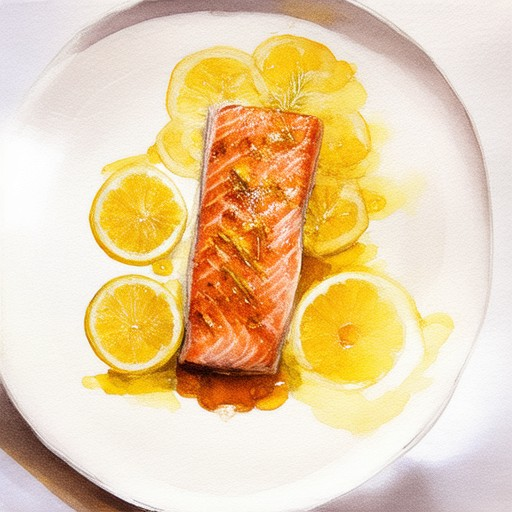
How to Make a Citrus Glaze
To create a delicious citrus glaze, follow these simple steps:
Ingredients:
- 2 large oranges
- 1 lemon
- 1 cup granulated sugar
- 1/4 cup fresh orange juice (for reduction)
- 2 tbsp butter or olive oil
- Salt and pepper to taste
- Optional: 1 clove garlic, minced
- Optional: 1 shallot, finely chopped
- Optional: 1 tsp thyme leaves
Instructions:
- Zest and Juice the Oranges: Use a microplane or fine grater to zest the oranges, capturing the zest in a small bowl. Squeeze the juice from both oranges into a measuring cup, ensuring you have about 1/4 cup.
- Prepare the Glaze Base: In a medium saucepan, combine the orange zest, orange juice, sugar, and optional garlic and shallot. Stir to dissolve the sugar and allow the mixture to simmer over medium heat until it reduces by half, approximately 10-15 minutes. The glaze should coat the back of a spoon thickly.
- Add Fat and Season: Stir in the butter or olive oil, depending on your preference for richness. Season with salt, pepper, and optional thyme leaves. Taste and adjust seasoning as needed.
- Use Immediately or Cool: Let the glaze cool slightly before using it as a drizzle or brush it onto your favorite proteins, such as chicken, pork, or fish. For best results, apply the glaze close to cooking time to prevent caramelization.
Tips and Variations:
- Herb Integration: Add fresh thyme, rosemary, or oregano for an herby twist.
- Spicy Kick: Mix in a bit of chili flakes or red pepper for a spicy citrus glaze.
- Vegetable Option: Use the glaze as a finishing sauce for grilled vegetables or roasted Brussels sprouts.
- Alternative Sweeteners: Substitute honey or maple syrup for a healthier option.
For more inspiring recipes and cooking tips, visit Only Fish Recipes .
Best Citrus for Salmon: A Guide to Complementary Flavors
The perfect pairing of citrus with salmon enhances the fish’s natural flavors, offering a bright and balanced taste. Here are some citrus varieties that work exceptionally well:
- Lemon : A classic choice, lemon adds a refreshing tang. Use freshly squeezed lemon juice as a marinade or drizzle over grilled or baked salmon.
- Orange : Sweet and tangy, orange complements salmon beautifully. Try a mandarin orange relish or orange zest in seasonings.
- Lime : Known for its zesty flavor, lime is ideal for ceviche and sushi. A lime-based dressing can elevate raw dishes.
- Mango : For a tropical twist, mango pairs well in salsas or chutneys. Its sweetness contrasts nicely with salmon’s richness.
- Tangerine/Clementine : These fruits offer a unique sweet-tart profile. Use them in tartare or as part of a vibrant sauce.
- Blood Orange : Their bold color and tartness add visual appeal and acidity, perfect for marinades or sauces.
- Kumquat : Common in Asian cuisines, kumquat adds a tangy note. Consider a kumquat-chili sauce for a spicy kick.
Each citrus fruit brings distinct benefits, whether you prefer a fresh squeeze, a relish, or a zesty addition. Experiment with these options to find your personal favorite combination!
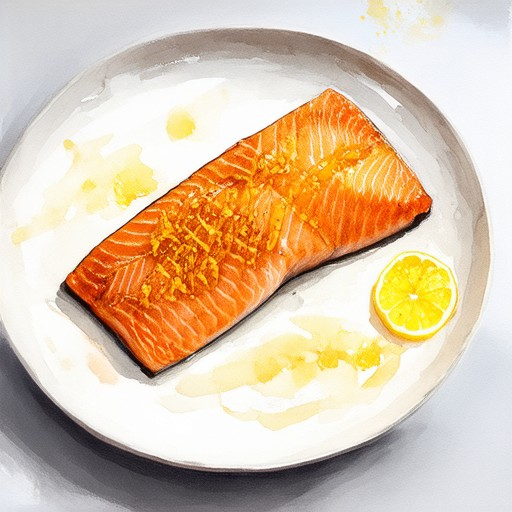
Gordon Ramsay’s Salmon Ingredients
- Dill – A classic herb used for its fresh, aromatic flavor
- Garlic – Adds a bold, pungent taste
- Lemon – Provides brightness and acidity
- Olive Oil – Perfect for searing or drizzling
- Capers – Small pickled vegetables for a tangy kick
- Butter – Enhances richness and moisture
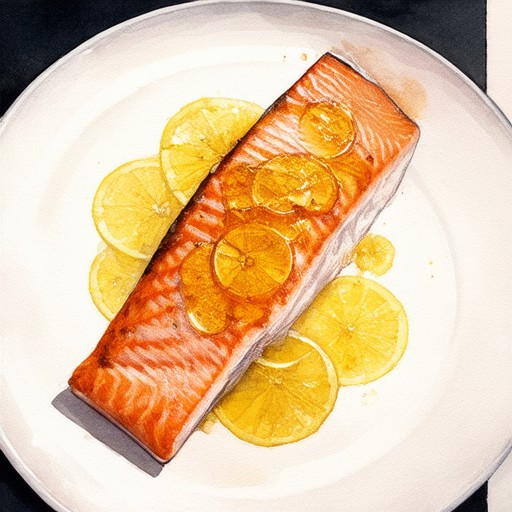
The Most Flavorful Way to Cook Salmon
Cooking salmon can be transformed into a flavorful experience with the right technique and ingredients. Here’s a step-by-step guide to achieving the best results:
- Choose the Right Method: Decide whether to grill, bake, pan-sear, or smoke your salmon based on your preferred flavor profile. Each method yields unique results.
- Prep Your Salmon:** Prepare fresh or frozen salmon by patting it dry with paper towels. Season with salt, pepper, and optional herbs or spices like dill, paprika, or cumin.
- Heat Your Tool:** Preheat your grill, oven, or skillet to the recommended temperature for your chosen cooking method. Grilling typically requires around 450°F (230°C), while baking can be done at 375°F (190°C).
- Sear or Grill:** For grilling, place the salmon skin-side down on the grill for about 4-5 minutes. Flip and cook the other side until it reaches your desired doneness, about 3-4 minutes longer. For baking, place salmon on a parchment-lined tray and bake until it’s cooked through, approximately 15-20 minutes.
- Control the Heat:** Avoid overheating the salmon, as it can become dry and lose its flavor. Use a meat thermometer to check doneness, aiming for an internal temperature of 145°F (63°C) for safe consumption.
- Add Finishing Touches:** Drizzle with lemon juice, sprinkle with fresh herbs, or top with a dollop of butter or cream cheese for added richness. Serve immediately for the freshest taste.
For more detailed recipes and cooking tips, visit our salmon cooking guide on Only Fish Recipes.
The Best Thing to Season Salmon With
Seasoning salmon with a carefully chosen blend of herbs, spices, and citrus can elevate its natural flavor to create a delicious dish. Here’s a comprehensive guide to achieving the perfect salmon seasoning:
- Dill : A classic choice, dill adds a refreshing, aromatic touch that complements salmon’s richness. It works exceptionally well in marinades and sauces.
- Garlic : Incorporate garlic powder or fresh minced garlic for a savory depth that balances the fish’s oiliness.
- Lemon Zest : A sprinkle of lemon zest provides a bright, citrusy note that enhances the salmon’s flavor without overpowering it.
- Black Pepper : A staple, black pepper adds a subtle heat and earthiness, making it a versatile seasoning option.
- Parsley : This earthy herb adds complexity and freshness, pairing well with dill for a balanced flavor profile.
- Optional Spices**: For those who enjoy heat, a pinch of paprika, cayenne pepper, or chili powder can add a smoky kick, especially when grilling.
- Onion and Shallot Powders : These add a sweet, caramelized depth to the seasoning, working well in rubs or marinades.
For optimal results, combine these seasons in a rub or marinade, ensuring a harmonious balance of flavors. Experiment with quantities and methods to tailor the seasoning to your preferences, whether grilling, baking, or pan-searing your salmon.

Baking Salmon at 350°F vs. 400°F
When deciding whether to bake salmon at 350°F or 400°F, several factors come into play, including texture, cook time, and flavor retention.
- 350°F: Baking at this lower temperature allows for a gentler cooking process, which can result in a softer texture and more retained moisture in the salmon. This method is particularly suitable for thicker fillets or those that you want to cook slowly, allowing the natural juices to meld together without overcooking.
- 400°F: A higher temperature like 400°F speeds up the cooking process significantly, leading to quicker searing and caramelization. This method works well for thinner fillets or when you want a crispier exterior and a firmer texture. However, it may risk drying out the fish if not monitored carefully.
Both temperatures can work well, depending on your preferred outcome. For a medium-rare texture with a golden brown sear, aim for 400°F. If you prefer a more tender, buttery texture, stick with 350°F. Always use a meat thermometer to ensure your salmon reaches an internal temperature of 145°F for safe consumption.
Conclusion: Choose 350°F for a more tender texture and 400°F for a crispy exterior. Adjust the temperature based on the thickness of your salmon fillets and your personal preferences for doneness.

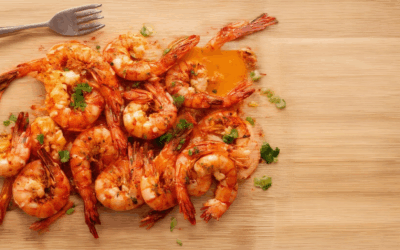
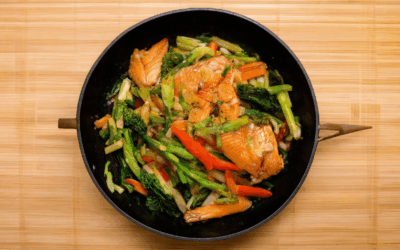

0 Comments